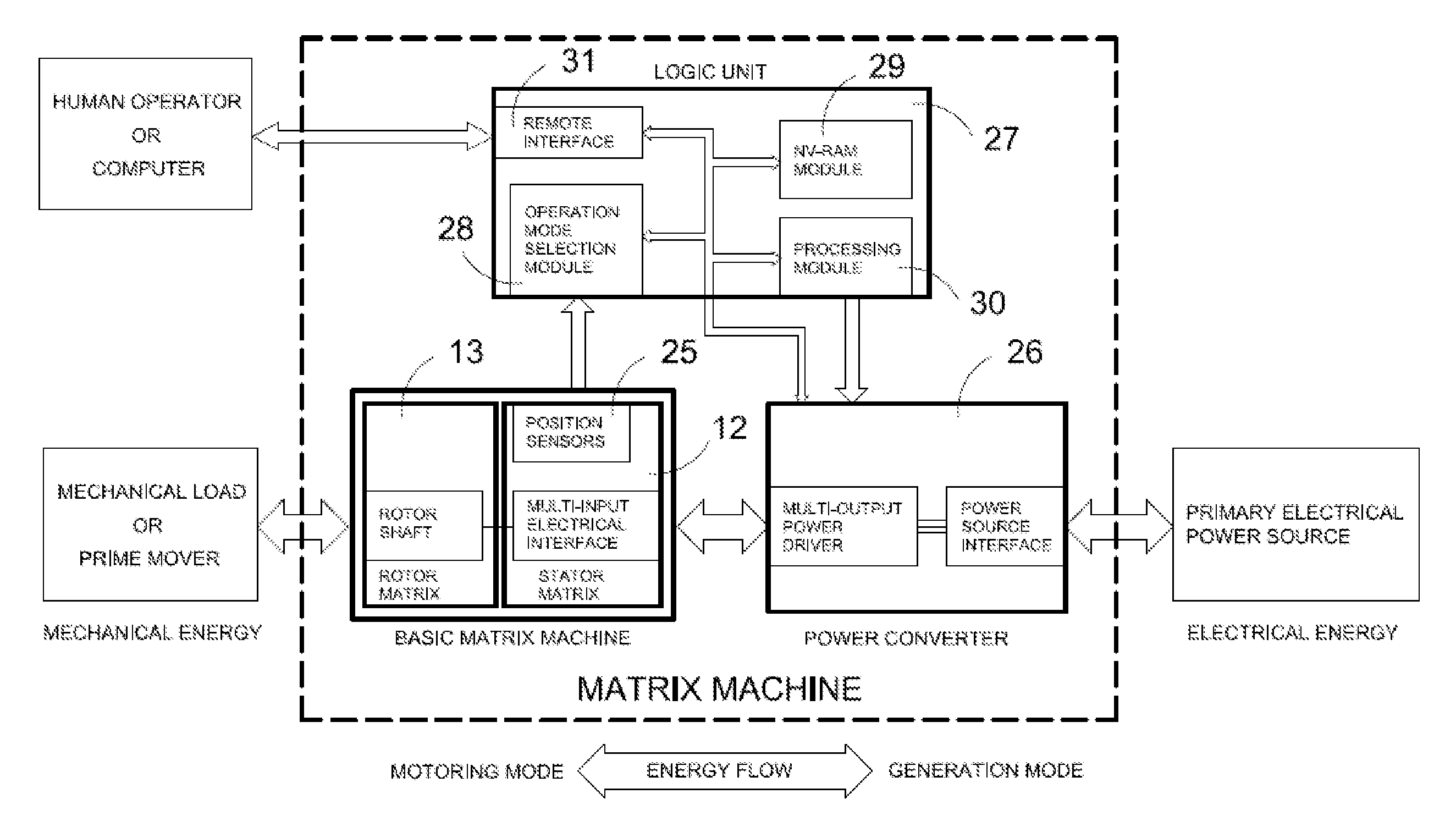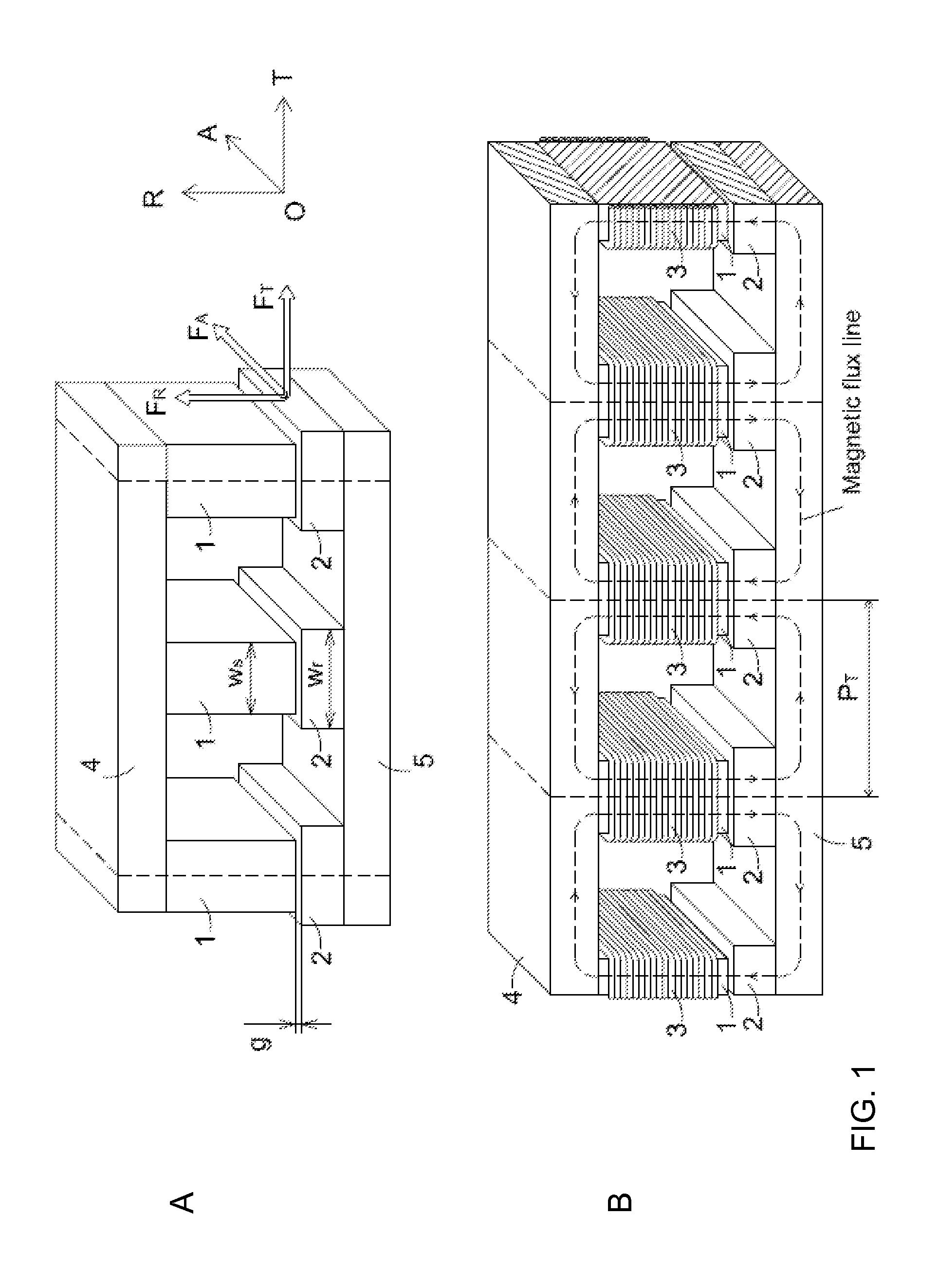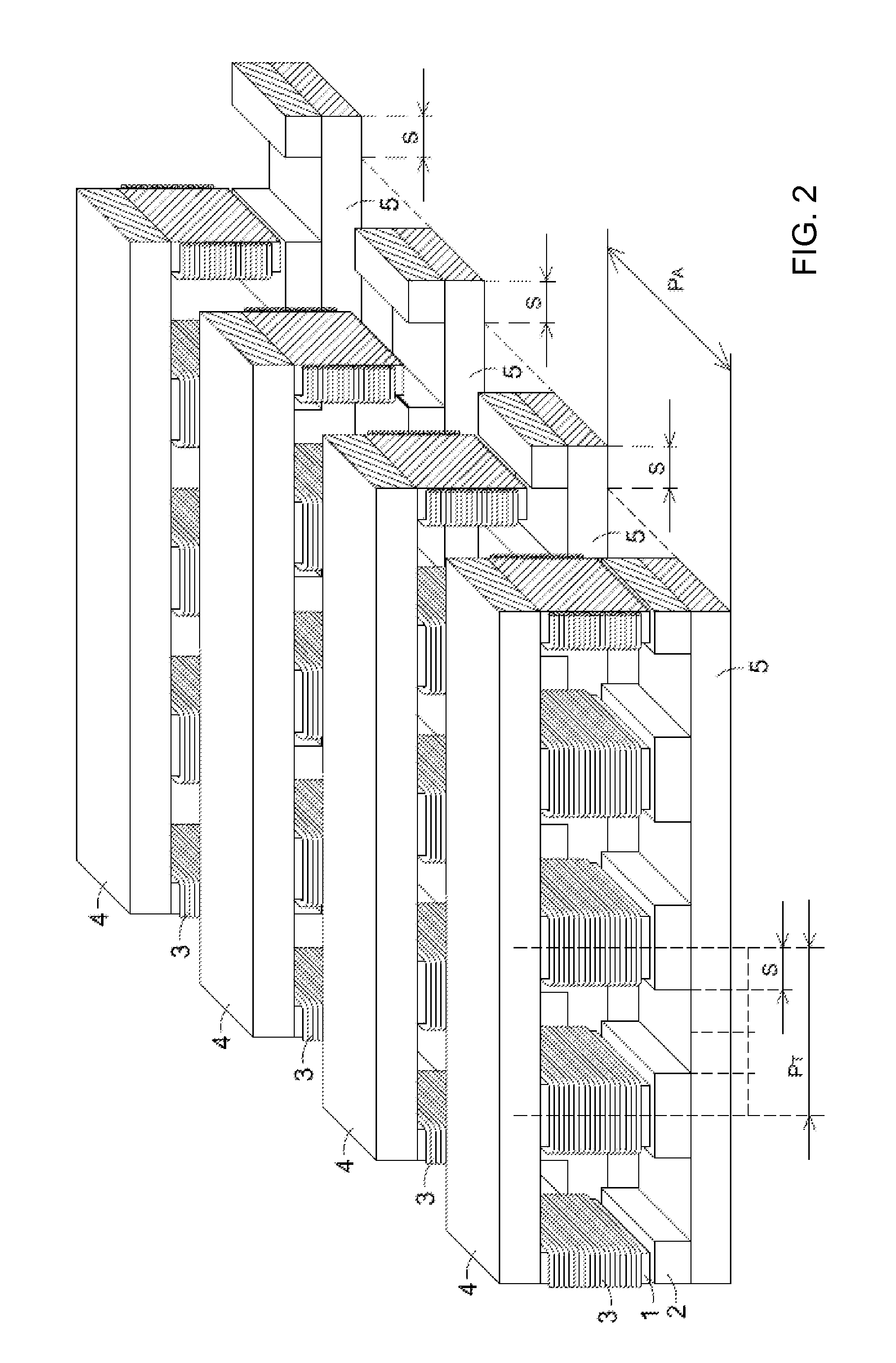Matrix integrated sequential magnetic attraction electric machine
a magnetic attraction electric machine and sequential technology, applied in the field of electric machines, can solve the problems of not providing the only suitable way to organize the matrix elements, and achieve the effect of reducing the output mechanical power, no energy waste, and high energy efficiency of the matrix machin
- Summary
- Abstract
- Description
- Claims
- Application Information
AI Technical Summary
Benefits of technology
Problems solved by technology
Method used
Image
Examples
Embodiment Construction
[0040]The matrix machine presented here can be operated randomly in either motoring or generation mode simply by selecting the appropriate scanning algorithm. As shown previously, the essential difference between the motoring and generation modes of operation consists in the sign of inductance slope during the activity of the generic stator-rotor pole pair. If the inductance slope is positive, the machine works in motoring mode. Conversely, if the inductance slope is negative, the machine works in generation mode. The scanning algorithms for the motoring and generation modes are similar, but not identical. For this reason, the logic unit needs a non-volatile random access memory module (shown in the block diagram in FIG. 13) to store the various scanning algorithms for each specific operation mode.
[0041]The active elements of the matrix machine can be operated independently (in which case each active element is connected to a separate power converter output), or can be grouped in su...
PUM
 Login to View More
Login to View More Abstract
Description
Claims
Application Information
 Login to View More
Login to View More - R&D
- Intellectual Property
- Life Sciences
- Materials
- Tech Scout
- Unparalleled Data Quality
- Higher Quality Content
- 60% Fewer Hallucinations
Browse by: Latest US Patents, China's latest patents, Technical Efficacy Thesaurus, Application Domain, Technology Topic, Popular Technical Reports.
© 2025 PatSnap. All rights reserved.Legal|Privacy policy|Modern Slavery Act Transparency Statement|Sitemap|About US| Contact US: help@patsnap.com



